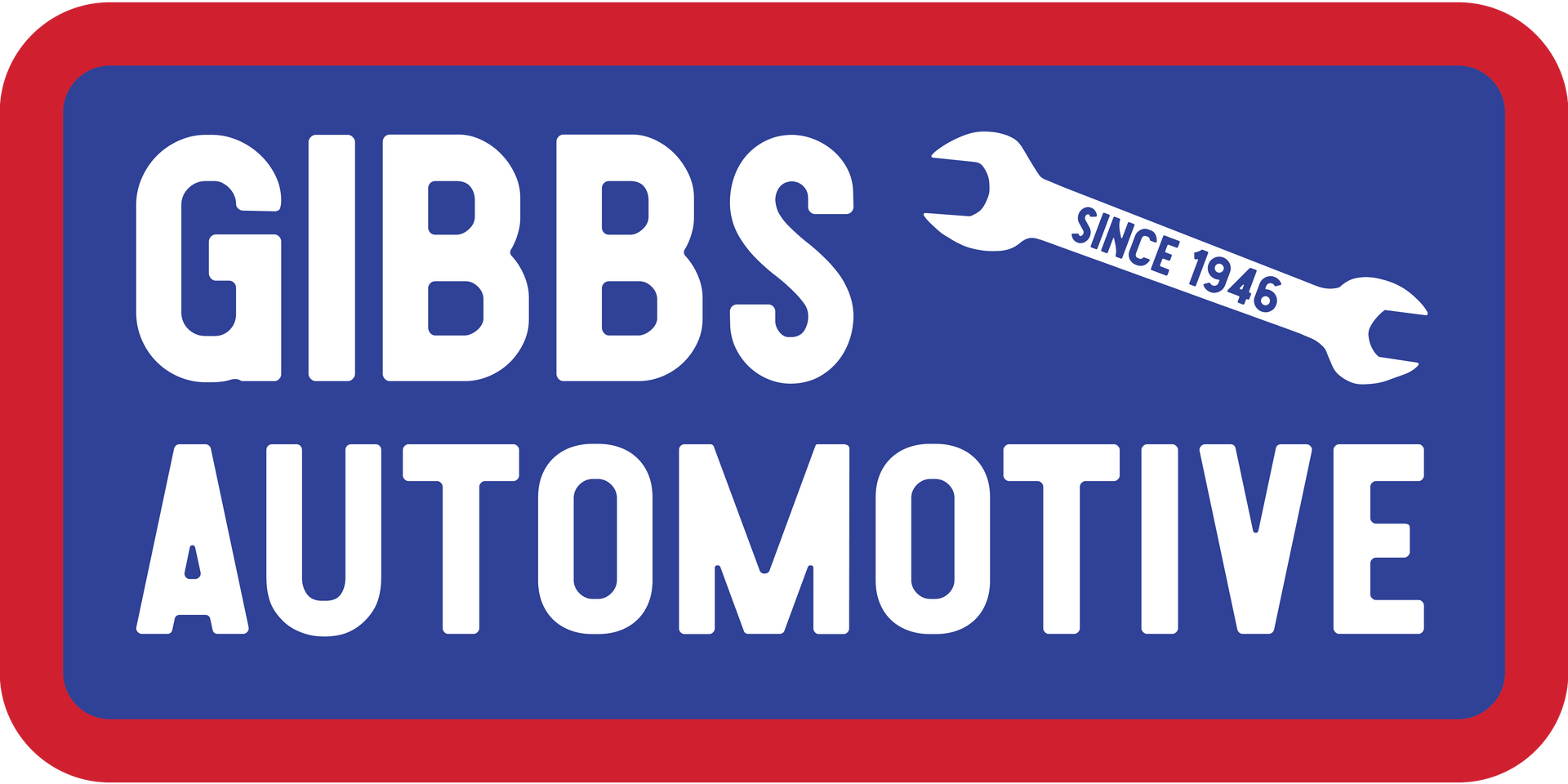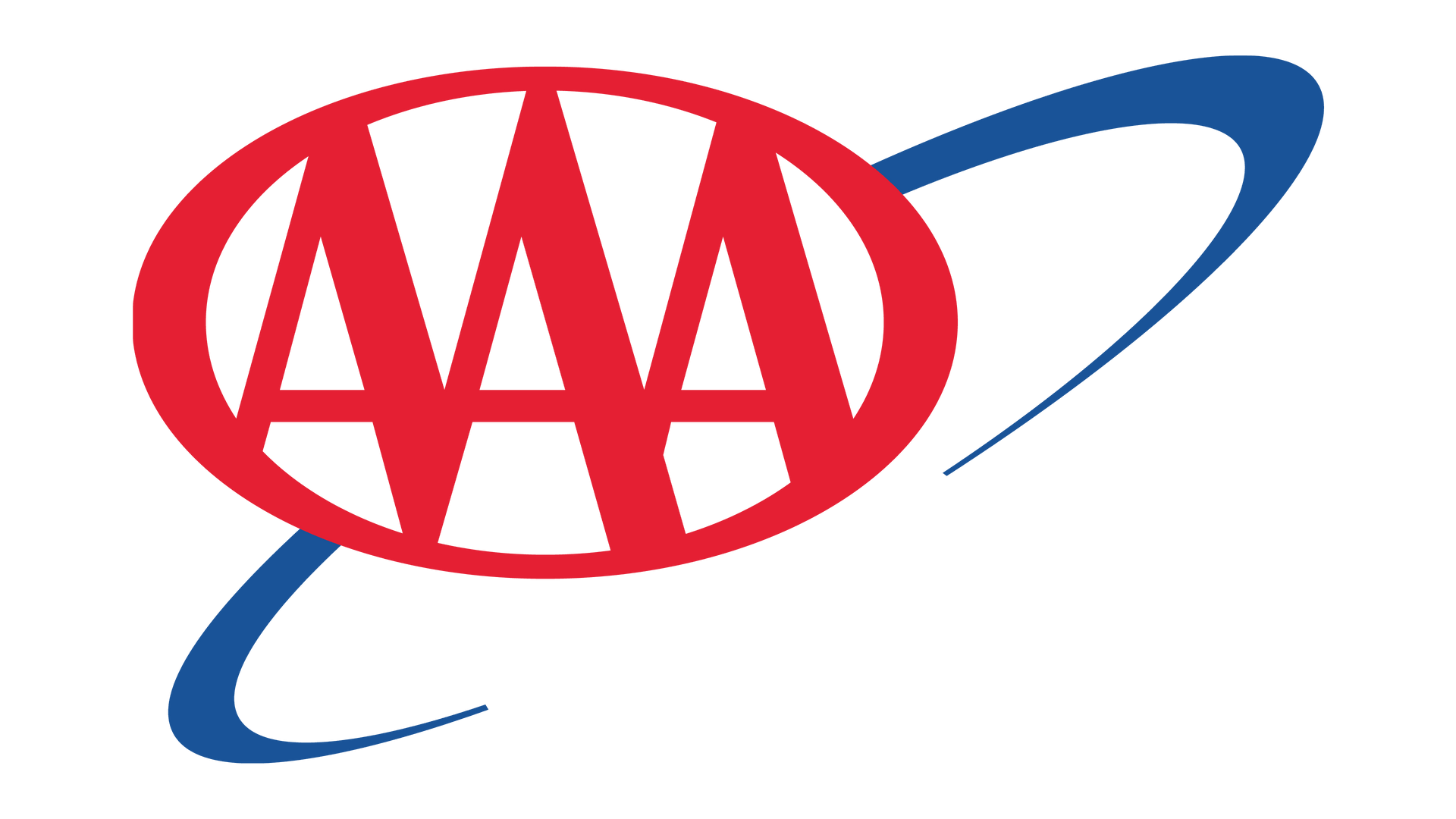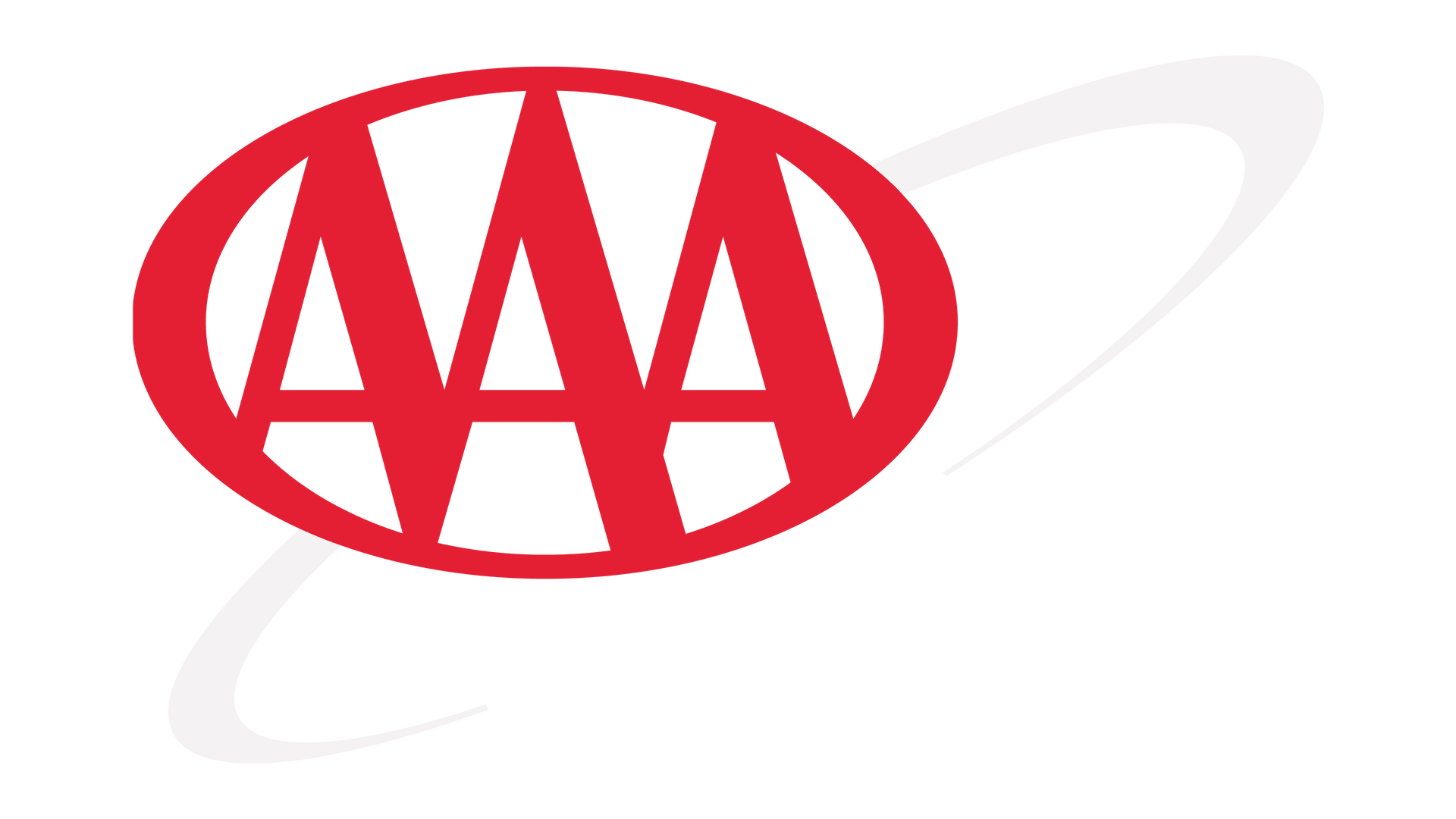BLOG
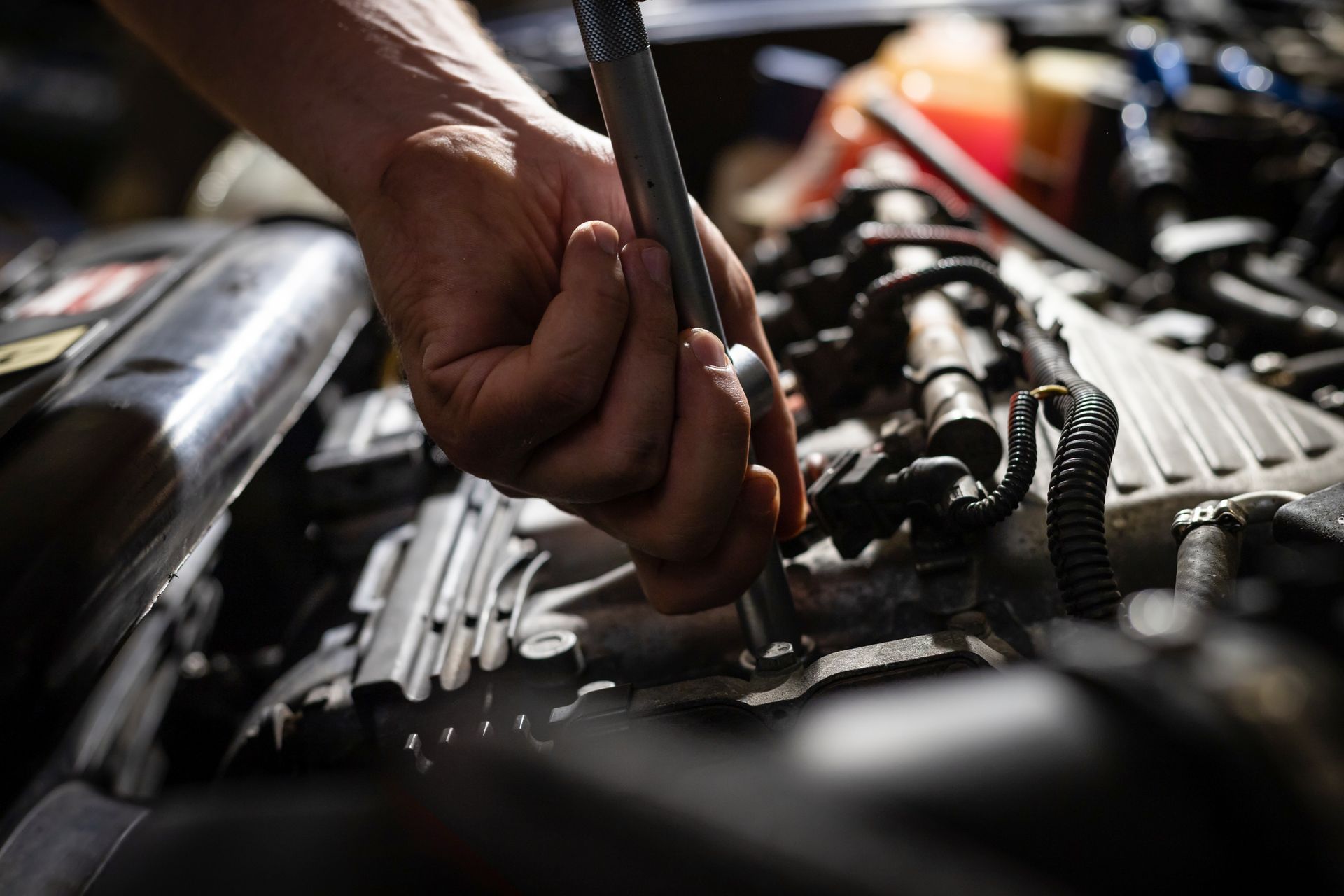
If your car feels sluggish, hesitates when accelerating, or your fuel economy isn’t what it used to be, your fuel system might be the problem. Over time, fuel injectors can clog, pumps can weaken, and filters can fill with debris—especially if your vehicle has high mileage or hasn't had fuel service in a while. At Gibbs Automotive in Conyers, GA, we offer complete fuel system services to help restore your vehicle’s power, improve gas mileage, and prevent long-term engine wear. Whether you drive a sedan, truck, or SUV, our ASE-certified team can diagnose and repair fuel-related issues to keep your engine running smoothly. What Does the Fuel System Do? Your vehicle’s fuel system is responsible for storing, filtering, and delivering fuel to the engine at the right time and pressure. It includes the fuel tank, fuel pump, fuel lines, fuel injectors, and filters. When any part of this system starts to degrade or clog, you may notice performance problems such as reduced acceleration, stalling, hard starts, or decreased efficiency. Signs Your Fuel System Needs Service Not sure if your fuel system is due for service? Watch for these signs: Trouble starting or frequent stalls Loss of power while driving or accelerating Poor fuel economy Engine misfires Rough idling or hesitation Unusual smells or fuel leaks Even one of these issues can signal it’s time to bring your vehicle in for an inspection. Our Fuel System Services Include We offer a full range of fuel system services, including: Fuel system diagnostics using professional-grade tools Fuel injector inspection, cleaning, and replacement Fuel pump testing and replacement Fuel filter replacements Throttle body cleaning Complete fuel system clean-outs to remove carbon buildup We’ll evaluate your system based on your vehicle’s age, mileage, and symptoms, then recommend the best course of action. No unnecessary services, no pressure—just honest recommendations to keep your vehicle running right. Why This Matters for Georgia Drivers In Georgia’s climate, especially during hot summer months, your engine and fuel system are under extra stress. Short trips, long idle times, and heat-related vapor buildup can all impact fuel delivery. If your injectors are even slightly clogged, your vehicle won’t run as efficiently, and you’ll end up wasting fuel every time you drive. Regular fuel system maintenance helps you avoid those issues, improve power, and extend the life of your engine. Why Choose Gibbs Automotive We’ve served the Conyers community for years, helping drivers keep their vehicles running like new. Our shop is equipped with the tools and experience needed to diagnose even the most stubborn fuel system issues, and we take the time to explain everything we find before doing any work. If you need fuel injector service, pump replacement, or just want to have your system checked out before the next long drive, we’re ready to help. Final Thoughts Fuel system problems can sneak up on you, but they don’t have to lead to major repairs if you catch them early. Whether you’re looking for better gas mileage or trying to eliminate sluggish performance, bring your vehicle to Gibbs Automotive in Conyers. We’ll take a close look, explain what’s going on, and help you get the best out of your car—mile after mile.
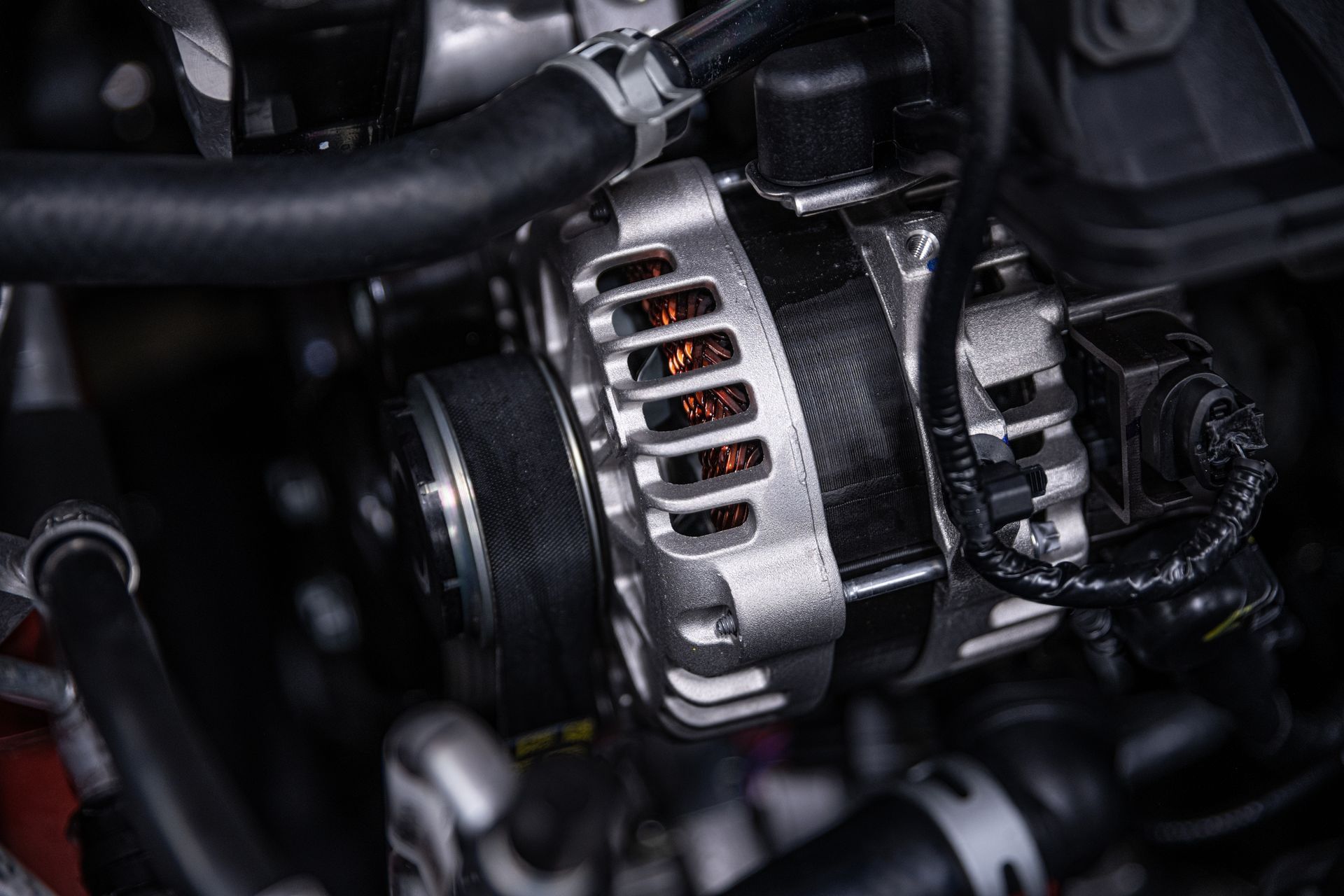
Most drivers don’t think about their car’s charging system—until it fails. One day everything’s fine, and the next your dashboard lights up, your vehicle won’t start, or worse, it dies while you’re driving. It’s frustrating, inconvenient, and usually avoidable. At Gibbs Automotive in Conyers, GA, we help local drivers stay ahead of charging system failure by spotting early signs and providing expert diagnostics and repairs. Georgia heat, frequent short trips, and aging electrical systems all put stress on your vehicle’s battery, alternator, and starter—especially during the spring and summer seasons. Here’s how to tell if your charging system needs attention, and what to do before it leaves you stranded. What Makes Up the Charging System? Your vehicle’s charging system consists of three main parts: The battery, which powers everything when the engine is off and helps start the vehicle The alternator, which generates electricity while the engine is running and keeps the battery charged The voltage regulator, which controls the flow of power between the alternator and the battery When any of these components start to fail, your vehicle may begin to show signs—sometimes subtle, sometimes obvious. Common Warning Signs of Charging System Failure If you’re noticing any of the following issues, it’s a good idea to bring your vehicle in for an electrical check: Dim or flickering headlights Battery or charging system warning light on the dash A slow or hesitant start Strange electrical behavior (radio cutting out, dashboard going dark) A burning smell near the alternator The engine stalls while driving Some issues may appear only once or twice before getting worse. Others seem to come out of nowhere. Either way, catching them early is the key to avoiding a tow or a no-start situation. How Georgia Weather Affects Your Charging System Conyers drivers face more heat and humidity than most areas of the country, especially during the spring-to-summer transition. That heat can accelerate battery corrosion and put extra strain on alternators and voltage regulators. If your vehicle sits for long periods or is used mainly for short trips, your battery may never get fully recharged. These conditions shorten the lifespan of charging system components, even in newer vehicles. That’s why we always recommend testing your battery and alternator if you’re heading into a heavy driving season or if it’s been more than a year since your last inspection. How Gibbs Automotive Diagnoses Charging Issues When you bring your vehicle to us for a charging system inspection, we go beyond just reading a battery voltage. Our diagnostics include: Load testing the battery to check actual capacity Testing the alternator’s output while the engine is running Inspecting belts, connections, and grounds for corrosion or wear Checking for parasitic drains (when the battery loses charge while the car is off) Once we have a clear picture, we’ll explain exactly what’s working, what’s starting to fail, and what needs to be done—if anything at all. Can You Just Replace the Battery and Be Done? Not always. In some cases, a failing alternator will drain even a brand-new battery. Or a loose ground wire may mimic a dead battery when the real issue is electrical. Swapping the battery without solving the underlying problem could leave you back where you started within days. That’s why it’s important to test the full system, not just the battery. We’ve helped plenty of drivers avoid unnecessary replacements—and helped others catch hidden issues before they caused major inconvenience. How Often Should You Check Your Charging System? We recommend testing the battery and alternator at least once a year—ideally in spring or early summer when Georgia’s heat starts to ramp up. If your battery is more than three years old or you’ve had electrical issues in the past, it’s especially important to stay ahead of it. You can have the system tested during a routine oil change or as part of a general spring inspection. It’s a quick service that offers a lot of peace of mind. Why Drivers in Conyers Trust Gibbs Automotive We’ve built our reputation by giving local drivers clear, honest answers. Whether your vehicle just needs a battery or something deeper like an alternator replacement, we’ll walk you through it without the upsell. Our ASE-certified technicians use professional-grade testing equipment and take the time to explain what’s happening in terms you can actually understand. Call us or book your electrical system check online today. We’ll get you in fast and make sure your vehicle is ready for spring and summer. Final Thoughts Charging system problems don’t always start with a dead battery. Sometimes they begin with a flicker, a hesitation, or a strange noise. Catching those signs early can save you time, money, and stress later. If your vehicle is acting up—or you just want to make sure it’s ready for the road—bring it to Gibbs Automotive in Conyers. We’ll keep your electrical system strong and your car starting reliably, every time.

Getting the Most Out of Your Vehicle: When to Schedule a Tune-Up in Conyers, GA A lot of drivers think tune-ups are a thing of the past—something older cars needed every few thousand miles. But the truth is, modern vehicles still need regular attention to keep running at their best. The service looks a little different than it used to, but the goal is the same: restore performance, improve fuel efficiency, and catch small issues before they become big ones. At Gibbs Automotive in Conyers, we perform modern tune-ups for all makes and models, whether your car is pushing 200,000 miles or still under warranty. And spring or early summer is the perfect time to get one done. Here’s what you need to know about when and why to schedule a tune-up—and how we help local drivers stay ahead of engine problems. What Is a Modern Tune-Up? These days, a tune-up isn’t just replacing spark plugs and calling it a day. Depending on the age and mileage of your vehicle, a tune-up may include: Replacing spark plugs and wires Checking or replacing ignition coils Cleaning or replacing the fuel injectors Inspecting and replacing air filters Checking PCV valves and sensors Running diagnostic tests to catch trouble codes Adjusting timing or idle (if needed) It’s all about restoring your engine to peak efficiency and preventing rough starts, poor fuel economy, or performance issues. Signs Your Vehicle Might Be Due for a Tune-Up If you’ve noticed any of the following lately, it’s a good time to bring your car in: Decreased fuel efficiency Sluggish acceleration Engine shaking or rough idling Unusual noises while driving Trouble starting A check engine light with no obvious cause Even if your car isn’t showing symptoms, if it’s been more than a year since your last comprehensive engine service, you may be due. Why Tune-Ups Matter in Georgia’s Climate Our hot, humid summers and unpredictable spring weather take a toll on your engine. Add in stop-and-go traffic, short trips, and heavy air conditioner use, and your vehicle works harder than most people realize. A tune-up in spring or early summer gives your engine a reset before the most demanding driving season of the year. It also gives us a chance to inspect components that wear out faster in the heat—like belts, hoses, batteries, and fluids. Can a Tune-Up Save You Money? Absolutely. A well-maintained engine runs more efficiently, which means better gas mileage, fewer emissions, and less wear on parts over time. Plus, catching a bad spark plug or sensor early could help you avoid costly repairs later. We’ve had customers bring in vehicles that were running rough, only to find that a simple plug replacement or filter cleaning made a huge difference. How Often Should You Schedule a Tune-Up? It varies by vehicle. Some manufacturers recommend major tune-up service every 30,000 to 60,000 miles, while others go longer. If you’re not sure, we can look up your maintenance schedule and let you know what’s recommended based on mileage and condition. That said, if your vehicle is past 75,000 miles and hasn’t had one in a while, it’s a good idea to schedule it soon—especially if you’re planning road trips this summer. Why Conyers Drivers Trust Gibbs Automotive for Tune-Ups We’ve helped thousands of local drivers in Conyers keep their vehicles running smoother, longer. Our tune-ups are done by ASE-certified technicians who understand the unique demands Georgia weather puts on your vehicle. We use high-quality replacement parts, check everything from top to bottom, and give you clear feedback on what’s needed now versus what to watch for later. Final Thoughts A tune-up might not sound urgent, but it’s one of the smartest ways to keep your car running at its best. Better performance. Lower fuel costs. More confidence on the road. If it’s been a while since your last tune-up, bring your vehicle to Gibbs Automotive in Conyers. We’ll give your engine a thorough inspection and get it ready for the season ahead.
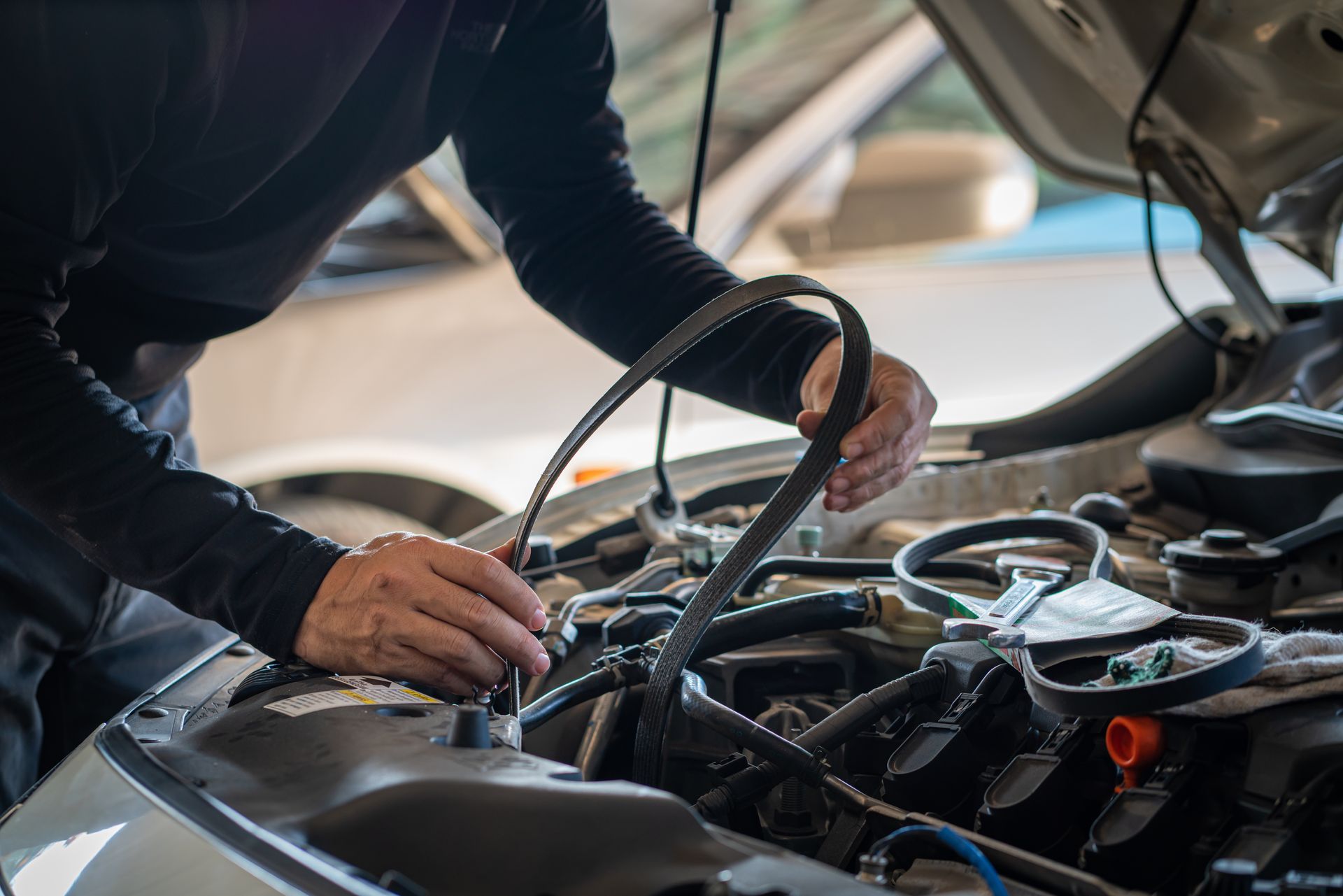
Some car repairs are inconvenient. Others are expensive. And then there’s the timing belt—one of those critical components that, if ignored too long, can lead to catastrophic engine damage. At Gibbs Automotive in Conyers, GA, we’ve seen what happens when timing belts break unexpectedly, and it’s not pretty. That’s why we always recommend being proactive. Replacing your timing belt before it fails can save you thousands of dollars and keep your vehicle running safely for years to come. Here’s what every Conyers driver should know about their timing belt, how to tell if it's wearing out, and when to schedule service. What Does a Timing Belt Actually Do? The timing belt keeps your engine’s internal components in sync—specifically the crankshaft and camshaft. This coordination ensures that the valves and pistons move in harmony. If that timing is even slightly off, it can affect how your engine runs. If the belt breaks while the engine is running, those moving parts can crash into each other. In an interference engine (which many modern vehicles have), that can lead to bent valves, damaged pistons, or even a ruined engine block. In short, the timing belt may be out of sight, but it should never be out of mind. When Should You Replace Your Timing Belt? Most timing belts should be replaced every 60,000 to 100,000 miles, depending on the vehicle. Some newer vehicles can go a bit longer, while others need attention sooner. If you're not sure when yours was last replaced—or if it ever has been—it's worth checking your owner's manual or asking us to look it up for you. In Georgia’s hot, humid conditions, belts can wear out faster, especially if your vehicle is used for stop-and-go traffic, towing, or frequent short trips around town. At Gibbs Automotive, we recommend having your timing belt inspected during your major mileage services or if you’ve recently purchased a used vehicle and don’t know its service history. Signs Your Timing Belt Might Be Wearing Out Unfortunately, timing belts don’t always give much warning before they fail—but there are a few symptoms that can suggest it’s time for a replacement: Ticking or clicking noises coming from the engine Difficulty starting the engine or rough idling Loss of power or engine misfiring Oil leaking from the front of the engine A check engine light combined with performance issues If your car is showing any of these signs—or if you’re approaching the recommended mileage—it’s time to get it checked before a small problem becomes a big one. Timing Belt vs. Timing Chain—What’s the Difference? Some vehicles use a timing chain instead of a belt. Timing chains are generally more durable and don’t require replacement as often, but they can still wear out, especially if oil changes have been neglected. If you’re not sure which one your vehicle has, we’ll be happy to look it up and let you know whether a belt or chain service is recommended based on your engine type and driving habits. Why Timing Belt Replacement Isn’t a DIY Job Replacing a timing belt is a complex job. It involves removing multiple engine components, ensuring precise alignment of parts, and, in some cases, replacing the water pump and tensioners at the same time. It’s not something most drivers should attempt on their own. At Gibbs Automotive, our technicians have the tools, training, and experience to replace your timing belt correctly and reset everything to factory specs. We also take the opportunity to inspect other nearby components—like seals, gaskets, and pulleys—while we’re in there, so you don’t have to worry about related issues later on. Why It’s Smart to Replace the Water Pump Too In many engines, the water pump is located behind or near the timing belt. Since the labor to get there is the same, it makes sense to replace both at the same time if they’re nearing the end of their life. It’s one of those “do it once, do it right” situations that helps you save money on future repairs and avoid coolant leaks or overheating down the line. Get Ahead of Problems with a Timing Belt Inspection in Conyers Spring and summer are prime driving seasons in Georgia. Whether you’re planning a vacation, more weekend driving, or just commuting daily, now is the time to make sure your engine is in good shape. If your timing belt is due—or you’re not sure when it was last serviced—schedule a quick inspection with Gibbs Automotive. We’ll give you an honest answer and walk you through the next steps if replacement is needed. Final Thoughts Timing belt failure is one of the most preventable causes of serious engine damage. Replacing it on time is an investment in your vehicle’s long-term health—and your own peace of mind. If your vehicle is approaching the mileage window or showing signs of wear, don’t wait. Let the team at Gibbs Automotive take care of it now so you can enjoy a smooth, worry-free summer on the road.
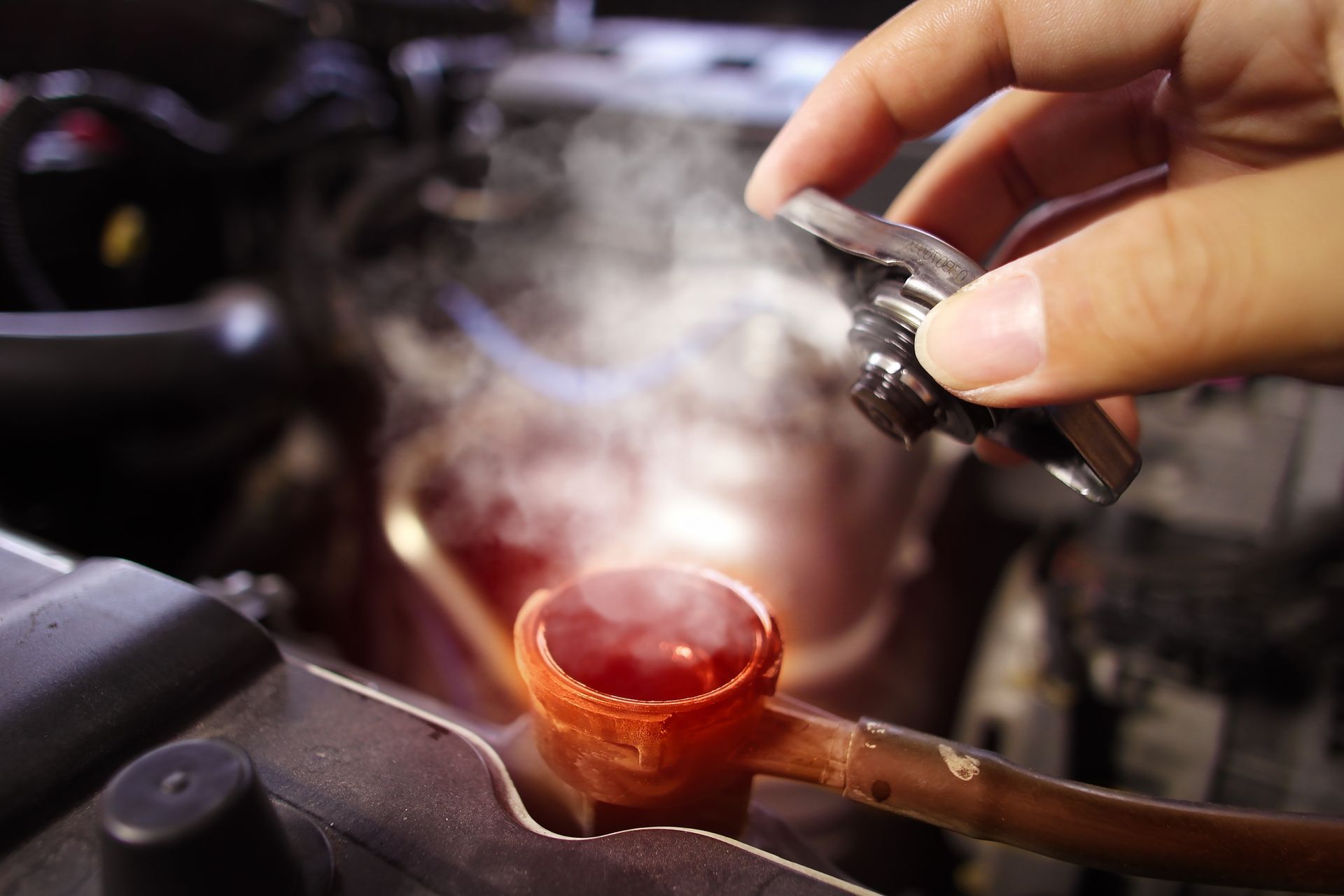
When most drivers think about car maintenance, they think oil changes, tire rotations, and maybe brakes. But your cooling system? That one often gets overlooked—until something overheats, a warning light flashes, or steam starts pouring from under the hood. In Conyers, Georgia, where summer temps can soar into the 90s and beyond, your cooling system has to work harder than usual to keep your engine running at a safe temperature. And when it’s not properly maintained, things can go south fast. At Gibbs Automotive, we see cooling system issues spike every spring and summer. In many cases, a simple cooling system flush could have prevented the problem. Let’s walk through what a flush is, why it matters, and how it helps keep your car reliable on Georgia roads. What Does the Cooling System Do? Your vehicle’s cooling system helps regulate engine temperature, especially when you're sitting in traffic, driving long distances, or using the A/C during a hot day. It does this by circulating coolant—also called antifreeze—through the engine and radiator, absorbing heat and keeping everything in the right operating range. Without a functioning cooling system, your engine would overheat quickly. That kind of heat can warp cylinder heads, damage gaskets, and cause expensive engine damage. What Is a Cooling System Flush? Over time, coolant breaks down. It becomes acidic, collects rust particles and debris, and loses its ability to regulate heat. When that happens, it can start to corrode your radiator and other metal components inside your engine. A cooling system flush removes the old, dirty coolant from your system and replaces it with fresh fluid. It also clears out rust, scale buildup, and anything else that could clog your radiator or hoses. This isn’t the same as just topping off your coolant. A flush actually forces the old fluid out of the system entirely, which is critical if you’ve been running the same coolant for years or you’re driving in high-heat conditions like we have here in Conyers. Signs Your Vehicle May Need a Cooling System Flush It’s not always obvious that your coolant is old or ineffective. But there are some signs that usually indicate it's time for a flush: The temperature gauge is running hotter than normal You see steam or notice a strong smell after driving The coolant in your reservoir looks brown, dark, or sludgy You hear bubbling sounds after shutting off the engine Your heater isn’t working well (yes, that can be related) It’s been over 30,000 miles or 2 years since your last flush Even if you’re not seeing these symptoms yet, scheduling a flush as part of your spring or summer maintenance can prevent them altogether. How Often Should You Flush the Cooling System? It depends on your vehicle, driving habits, and the type of coolant used. Many manufacturers recommend flushing every 30,000 to 50,000 miles, but that can vary. In hotter climates like Georgia, or if you’re doing a lot of heavy driving (towing, stop-and-go traffic, long commutes), you may want to flush it more frequently. We can check the condition of your coolant during any routine visit to Gibbs Automotive. If it’s still in good shape, we’ll tell you. If it’s time for a flush, we’ll walk you through it. What Happens If You Don’t Flush Your Cooling System? Skipping a flush can lead to several issues: Coolant leaks from corroded hoses or seals Clogged radiator or heater core Overheating, especially in summer Permanent damage to the water pump or engine. And once those things happen, you're looking at repairs that cost far more than a basic cooling system service. Think of a flush like preventive medicine for your engine—it keeps the system healthy and protects you from major headaches down the road. Why Summer Is the Best Time to Get This Done When the weather heats up, your engine is under more stress. Every traffic jam, long drive, or quick trip with the A/C cranked adds heat that your cooling system has to manage. Scheduling a flush now, before Georgia’s full summer heat kicks in, gives your vehicle a head start. It’s one of the smartest things you can do to ensure reliability through the warmest months of the year. Why Conyers Drivers Choose Gibbs Automotive for Cooling System Services At Gibbs Automotive, we help drivers stay on top of the services that matter—not just the ones that are easy to remember. Our team of ASE-certified technicians will inspect your entire cooling system, test your coolant, and perform a complete flush if needed. You’ll never get a generic one-size-fits-all service. We match the correct coolant to your vehicle’s specifications and make sure the job is done right—no shortcuts, no guesswork. Final Thoughts Cooling system flushes don’t get as much attention as oil changes or brake checks, but they’re just as important—especially in Georgia. If it’s been a while since your last flush, or if your engine is starting to run hotter than usual, bring your vehicle to Gibbs Automotive in Conyers. We’ll make sure your coolant is fresh, your system is clean, and your engine is ready to handle anything the summer throws its way.
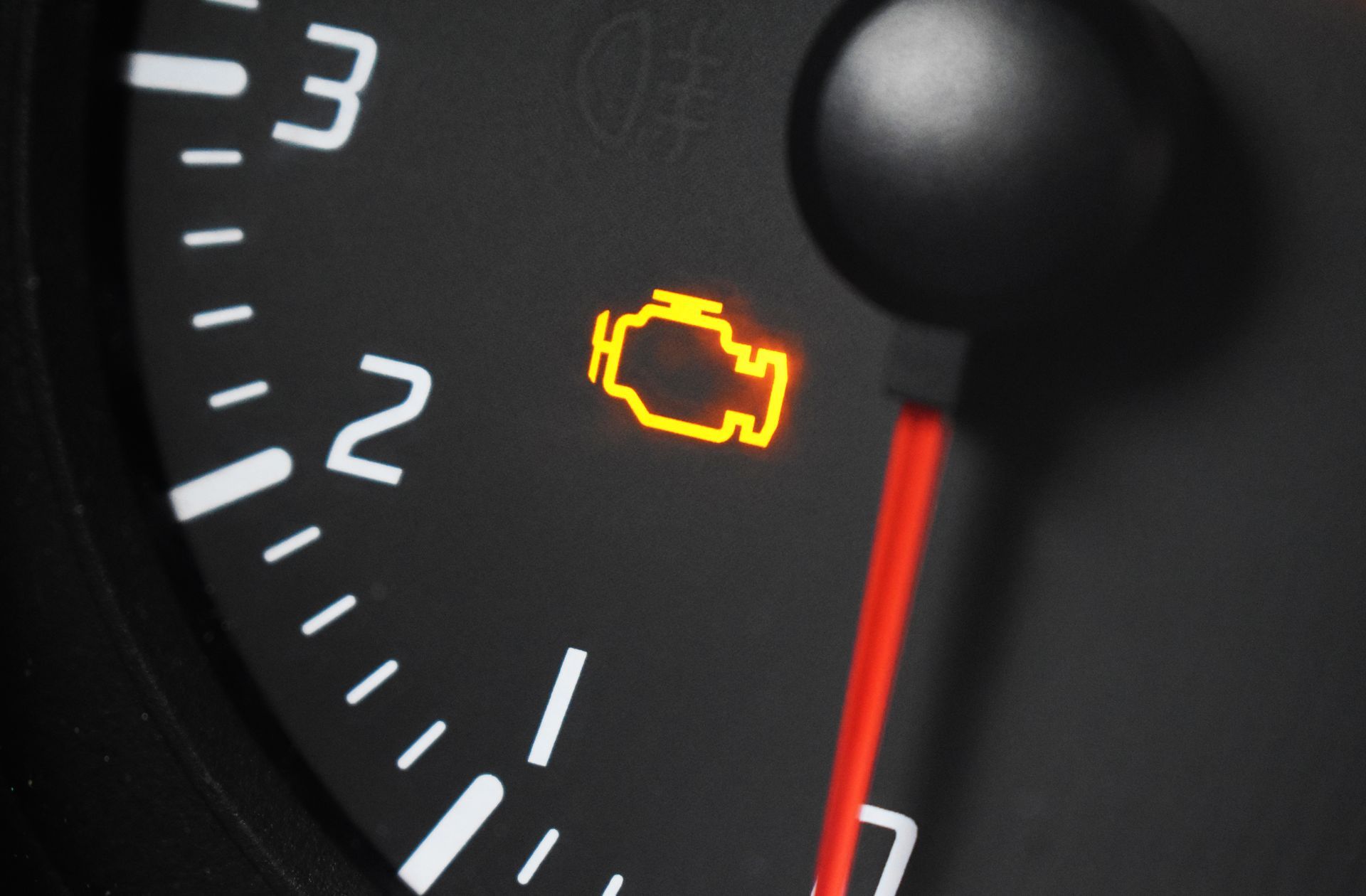
It’s one of the most common (and most frustrating) moments in car ownership. You’re driving through Conyers, everything seems fine, and suddenly the check engine light pops on. No sounds. No smoke. No obvious issue. Just that little orange glow staring you down from the dash. At Gibbs Automotive, we get calls about this almost every day—what does it mean? Can I keep driving? How serious is it? The answer depends, but one thing’s for sure: the check engine light should never be ignored. Even if your vehicle feels like it’s running fine, that light is your car’s way of telling you something needs attention. Here’s what you need to know if your check engine light comes on, and how we help Conyers drivers figure out the issue quickly and affordably. What the Check Engine Light Actually Means The check engine light is part of your car’s onboard diagnostics system. When a sensor detects something outside the normal operating range—whether it’s an issue with your engine, exhaust, fuel system, or transmission—it sends a signal to the computer, which triggers the warning. Some problems are minor, like a loose gas cap. Others are more serious, like misfiring cylinders, faulty oxygen sensors, or failing catalytic converters. The tricky part is that you can’t tell how serious the problem is just by looking at the light. That’s why getting it scanned with the proper diagnostic tools is the best way to know what’s really going on. Flashing vs. Solid Light: What’s the Difference? If your check engine light is solid , the issue is likely non-urgent, but still worth checking soon. It could be related to emissions, fuel trim, or an engine sensor that’s starting to fail. You can usually keep driving safely, but you shouldn’t delay the diagnosis too long. If your check engine light is flashing , that means something more serious is happening right now—often engine misfires that could damage the catalytic converter. In that case, it’s best to pull over and call a trusted shop like ours before continuing. What Are the Most Common Causes? At Gibbs Automotive, we’ve diagnosed just about every type of check engine light issue under the sun. Here are some of the most common reasons we see: Loose or faulty gas cap Failing oxygen sensor Bad spark plugs or ignition coils Mass air flow sensor failure Catalytic converter trouble Fuel injector issues Transmission sensor errors Evaporative emissions leaks. Each of these has a different repair path, and most of them can’t be diagnosed without scanning the system properly. That’s where we come in. What Happens During a Diagnostic Scan? When you bring your car to Gibbs Automotive, we use professional-grade scan tools to read the trouble codes from your vehicle’s computer. These codes tell us what system triggered the alert and help narrow down the source of the problem. But we don’t stop there. Codes are just the starting point. Our ASE-certified techs use their training and experience to trace the issue, inspect the related components, and determine whether the problem is something urgent or something that can wait. Once we know what’s going on, we walk you through it in plain terms—no jargon, no scare tactics. You’ll know what’s causing the light, what your options are, and what it’ll cost to fix. Should You Try to Diagnose It Yourself? We know there are cheap code readers available online or at auto parts stores. They can be useful for basic info, but they don’t provide the full picture. Many codes have multiple potential causes. Replacing parts based on guesswork can lead to unnecessary expenses—or even make the problem worse. We’ve had customers come in after trying to fix a sensor, only to learn the issue was a wiring problem or a completely different part. Our recommendation? Let a shop with the right tools and training take a look first. It’s faster, more accurate, and often cheaper in the long run. How Long Can You Drive With the Check Engine Light On? If the light is solid and the car seems to be running normally, you can usually keep driving for a short time—especially to get to the shop. But waiting too long can cause small problems to become big ones. If the light is flashing, the best course of action is to stop driving and call us. A flashing light often points to an active misfire, which can damage your catalytic converter if left untreated. Even if your vehicle is running fine for now, remember: the computer turned that light on for a reason. Why Conyers Drivers Trust Gibbs Automotive for Diagnostics We’ve been helping drivers in Conyers for years, and check engine light diagnostics are something we handle every day. Our technicians are trained to find the issue quickly and accurately, and our goal is always to give you honest answers without the runaround. We also stand by our work. If the fix doesn’t solve the issue, we’ll make it right. That’s what it means to be a neighborhood shop that takes care of its community. Final Thoughts A check engine light doesn’t always mean disaster—but it does mean it’s time to listen to what your car is trying to tell you. Whether it’s a simple fix or something more complex, Gibbs Automotive in Conyers can help you figure it out, fix it right, and get you back on the road with confidence.
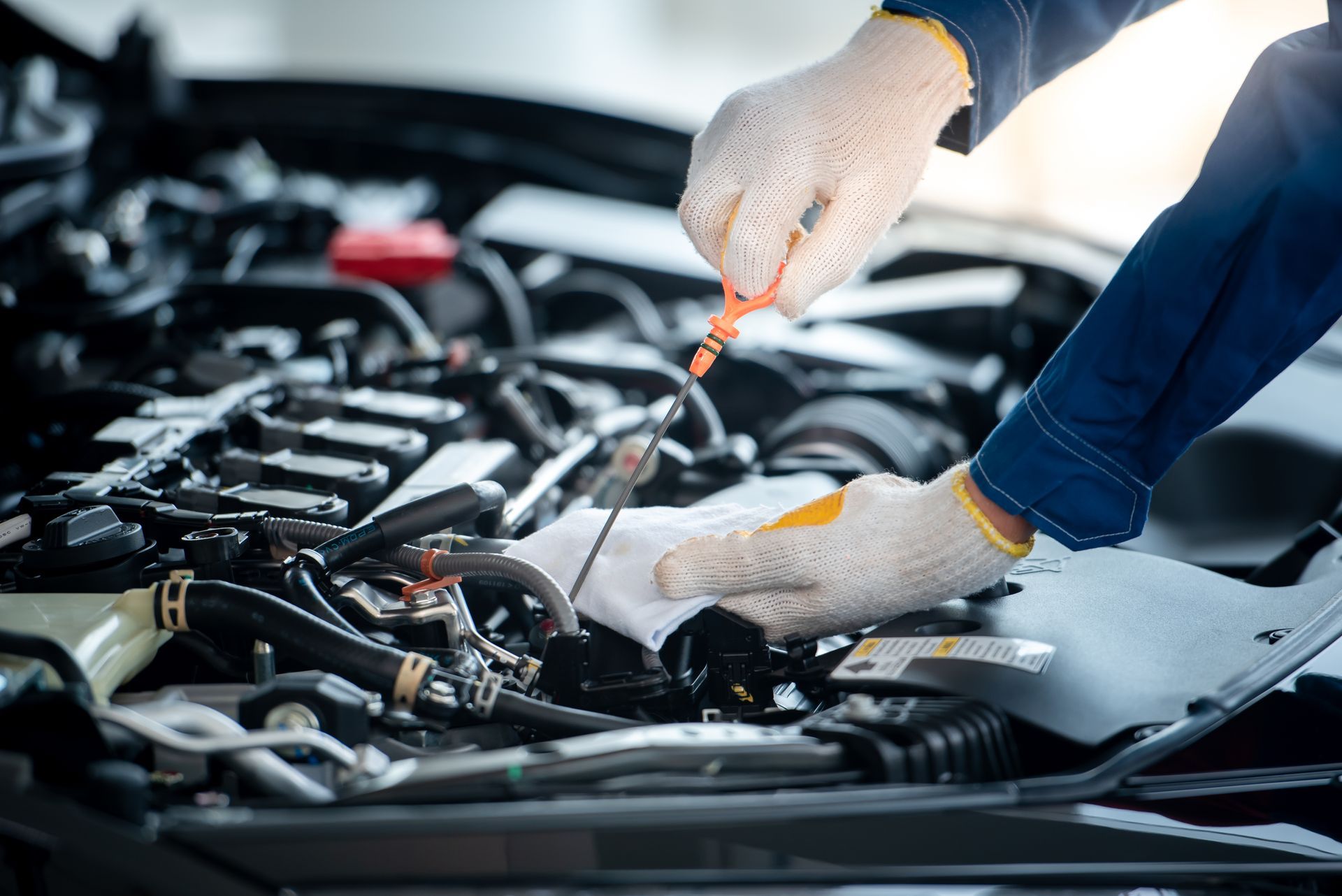
Your vehicle’s transmission is one of the most important systems under the hood—and one of the most expensive to repair if it fails. In the summer months, especially here in Georgia, your transmission works harder than almost any other time of year. Between long drives, high temperatures, stop-and-go traffic, and towing or hauling, it’s easy for the system to overheat if it’s not properly maintained. At Gibbs Automotive in Conyers, we help local drivers stay ahead of costly transmission problems with seasonal inspections, fluid services, and honest repair recommendations. If you’ve never thought about how summer affects your transmission, now’s the time. Here’s what every Conyers driver should know before the heat hits full force. How Georgia Summers Impact Your Transmission Hot weather affects your transmission in a few key ways. First, high ambient temperatures cause transmission fluid to heat up faster. That fluid is what keeps your transmission parts lubricated and running smoothly. When it gets too hot or starts to break down, the transmission is no longer properly protected. If you’ve ever noticed your vehicle hesitating, slipping between gears, or jerking slightly when accelerating during summer months, it could be a sign that your transmission is overheating or your fluid is low or dirty. Driving in traffic on Highway 138 or I-20? Towing a trailer to Lake Oconee or the North Georgia mountains? Those are perfect examples of high-stress driving conditions that can push your transmission past its limits if it’s not in good shape. Common Signs of Transmission Trouble Not every transmission problem comes with a warning light. Sometimes the signs are subtle at first. Keep an eye (and ear) out for: Slipping gears or a delay when shifting Burning smell or unusually hot engine compartment Grinding or humming noises Fluid leaks under the vehicle (usually red or dark brown) Check engine light comes on, especially after long drives Sudden surges or loss of power. If you’re experiencing any of these, it’s important to bring your vehicle in for a check before more damage is done. What Kind of Transmission Service Do You Need? There are a few basic ways to maintain your transmission, depending on the type of vehicle and its age: Transmission fluid check and top-off: Making sure the fluid is at the right level and still in good condition Transmission fluid flush or exchange: Replacing old, worn-out fluid with fresh fluid to keep the system protected Transmission filter replacement: On some vehicles, the filter needs to be replaced periodically to avoid buildup and contamination At Gibbs Automotive, we’ll inspect your system and let you know exactly what’s needed. If everything looks good, we’ll send you on your way with peace of mind. If something needs attention, we’ll explain it in plain terms and get your approval before moving forward. How Often Should You Service Your Transmission? For most vehicles, transmission service is recommended every 30,000 to 60,000 miles. But if you drive in extreme heat, tow frequently, or sit in a lot of traffic, you may need to service it more often. Summer is one of the best times to schedule this service, especially if you’ve never had your transmission fluid inspected or changed before. Think of it like an oil change, but for one of the most complex parts of your vehicle. Is a Transmission Flush Always Necessary? Not necessarily. In fact, a full flush isn’t always the best choice for high-mileage vehicles or older transmissions that haven’t been regularly serviced. Sometimes, draining a portion of the fluid and replacing it gradually is the safer move. Our team at Gibbs Automotive will recommend the best service option for your vehicle based on its condition, mileage, and how you use it. Can You Prevent Transmission Failure in Summer? Absolutely. Most major transmission failures start with small issues—old fluid, minor leaks, clogged filters, overheating. If you catch and fix those problems early, you can avoid the cost of replacing or rebuilding the entire system. Routine checks and fluid changes are a small investment compared to the thousands of dollars a new transmission can cost. Why Choose Gibbs Automotive for Transmission Service in Conyers We’re a trusted name in Conyers because we focus on doing the job right the first time. We’re not here to upsell you or push unnecessary repairs. When you bring your car in, we take the time to inspect the system, explain our findings, and offer transparent recommendations that make sense for your car and your budget. You can call to schedule an appointment or book online. Most transmission inspections can be completed same day, and we’ll let you know exactly what we find. Final Thoughts Summer driving in Georgia doesn’t have to be hard on your vehicle—if you’re proactive. Getting ahead of transmission issues now means a smoother ride, better performance, and fewer surprises on the road. If your car is hesitating, shifting weird, or you just want to play it safe before temperatures spike, bring it to Gibbs Automotive in Conyers. We’ll make sure your transmission is ready for whatever the summer brings.
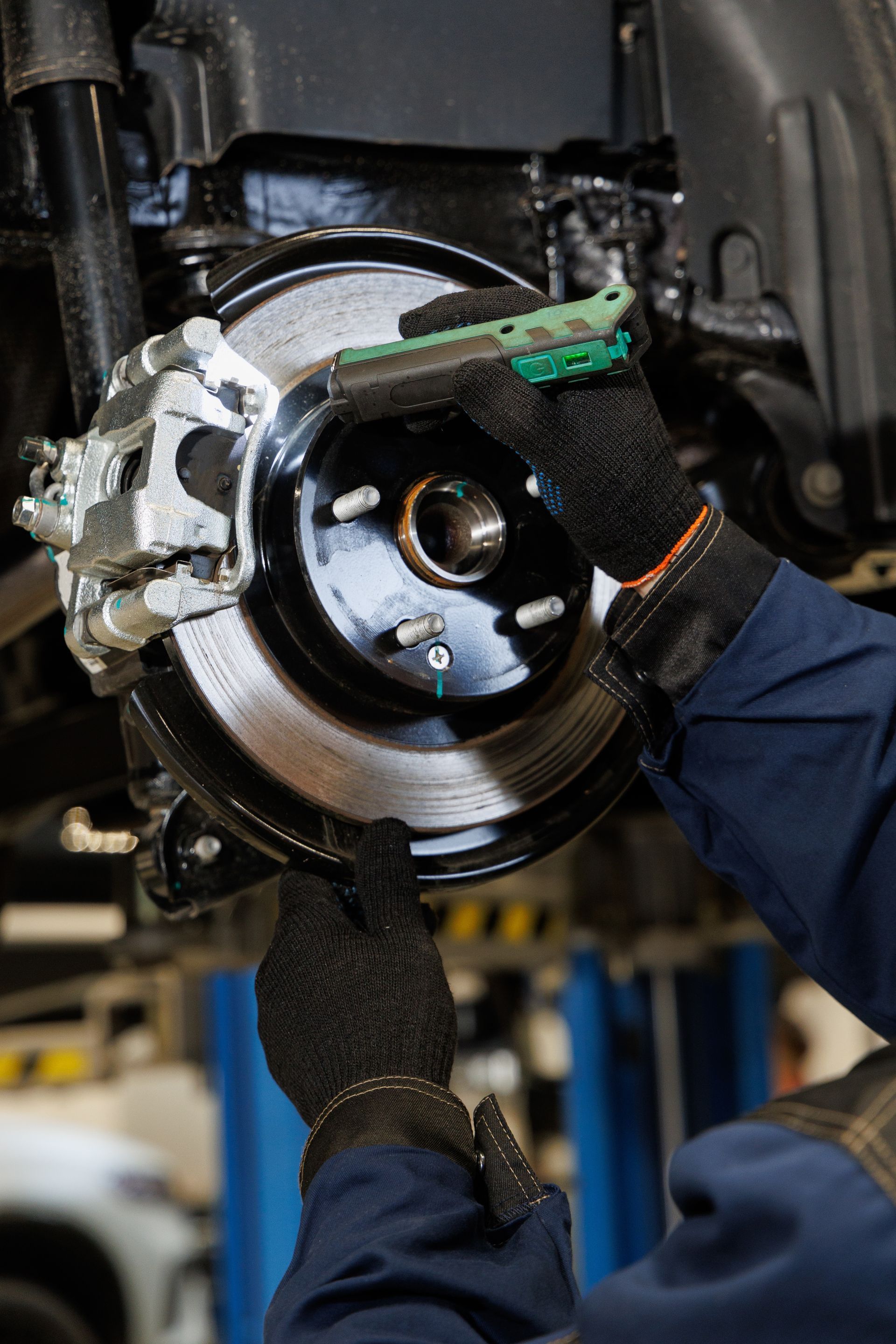
Spring in Conyers doesn’t just mean blooming flowers and warmer weather—it also means heavy rains, slick roads, and a greater demand on your vehicle’s braking system. If your brakes were already showing signs of wear during the winter, spring is when those issues usually come to the surface. At Gibbs Automotive, we always recommend scheduling a brake inspection as part of your seasonal maintenance—especially heading into Georgia’s rainy months. It’s not just about staying safe. It’s also one of the most cost-effective ways to prevent bigger repair bills later in the year. Here’s everything Conyers drivers need to know about how spring weather impacts your brakes, what signs to watch for, and when it’s time to bring your vehicle in for service. How Rainy Roads Impact Brake Performance When the roads are wet, stopping takes longer. That’s just physics. Water creates a thin layer between your tires and the pavement, which can reduce traction and cause hydroplaning if your brakes or tires aren’t in top shape. On top of that, moisture can lead to rust and corrosion on brake components—especially if your vehicle sits unused for even a few days at a time. Over time, rust can cause your brake pads to seize or your calipers to stick, which can lead to uneven wear or reduced stopping power. In short, rainy weather pushes your brakes harder, and if they’re not ready for it, you could find yourself in a dangerous situation. Signs Your Brakes Might Be Due for Service Some brake problems come on slowly. Others hit all at once. Here are a few signs that should prompt you to schedule a brake inspection: You hear squeaking, squealing, or grinding when braking The steering wheel vibrates when you brake Your vehicle pulls to one side while braking You notice a burning smell after heavy stops It takes longer than usual to come to a full stop The brake pedal feels soft, spongy, or low Even if your vehicle isn’t making noises, any change in braking performance—especially during wet conditions—should be taken seriously. How Often Should You Have Your Brakes Checked? Most manufacturers recommend checking your brakes at least once a year, but Georgia’s weather and road conditions often call for more frequent inspections. If it’s been over six months since your last brake check—or you’re planning to do more driving during the spring and summer months—it’s a good idea to schedule one now. Routine checks can help catch: Worn brake pads or shoes Scored rotors Leaking brake fluid Stuck or frozen calipers Faulty brake lines or master cylinders Catching these problems early helps you avoid more expensive repairs later. It also gives you peace of mind that your brakes will perform the way they should when it counts. What Happens During a Brake Inspection at Gibbs Automotive When you bring your vehicle to Gibbs Automotive in Conyers for a brake inspection, our ASE-certified technicians go through the full system to look for wear, leaks, and performance issues. We check: Brake pad thickness and wear patterns Rotor surface condition and measurements Brake fluid level and quality Calipers and hardware condition Brake lines and hoses Emergency brake function We’ll walk you through our findings, show you any parts that need attention, and give you an honest assessment of what should be done now versus what can wait. No pressure, just straightforward recommendations to keep your vehicle safe. Why Spring Is the Best Time to Get Ahead of Brake Issues Spring is when everything gets busier. You might be driving more on weekends, planning road trips, or navigating stop-and-go traffic around construction zones. That means more pressure on your brakes. It’s also when Conyers roads are at their slickest. Between sudden downpours and leftover gravel or debris from winter, it’s easy for a split-second delay in stopping to turn into a close call—or worse. By getting your brakes checked early in the season, you’re giving yourself a safety edge and helping your vehicle perform at its best when conditions are unpredictable. Brake Repairs Don’t Have to Be Complicated A lot of drivers delay brake service because they worry it’ll be expensive or take too long. In reality, most brake repairs are straightforward when caught early. Replacing brake pads before they wear down to the metal is far cheaper than replacing pads, rotors, and calipers together. At Gibbs Automotive, we work to catch things early and offer honest pricing with clear explanations so you always know what you’re paying for. Why Conyers Drivers Choose Gibbs Automotive We’re not just another shop—we’re your neighborhood team. We’ve been helping drivers in Conyers stay safe on the road for years, and we take that responsibility seriously. Our brake inspections are detailed, our service is transparent, and our team is always available to explain what we’re seeing and how to fix it. You won’t get vague answers or surprise fees. Just reliable help from people who care about keeping your car safe. If you’re ready to get your brakes checked before the rainy season picks up, here’s how to reach us: You can call or schedule an appointment online. We’ll make it quick, easy, and worth your time. Final Thoughts When the roads are wet and unpredictable, your brakes are your first line of defense. If something feels off—or if it’s simply been a while since your last inspection—don’t wait. A quick check today could save you from a big problem tomorrow. Bring your vehicle to Gibbs Automotive in Conyers and make sure your brakes are ready for whatever spring throws your way.

If you’ve done any driving around Conyers this spring, you’ve probably hit a pothole or two. Maybe more than a few. Between winter rain, fluctuating temperatures, and ongoing roadwork around Rockdale County, potholes are everywhere this time of year—and your car’s suspension feels every single one. You might not think much of it when your car bounces hard or makes a new noise after hitting a rough patch of road, but over time those bumps can add up to real damage. Your suspension and steering systems take the hit so you don’t have to—but that doesn’t mean they don’t wear down. At Gibbs Automotive in Conyers, we’ve seen how spring road conditions can take a toll. If you’re starting to notice strange noises, a rougher ride, or your vehicle pulling to one side, it’s time to get your suspension and steering inspected before things get worse. What Does the Suspension System Actually Do? Your suspension system is what keeps your ride smooth and your wheels in proper contact with the road. It includes parts like shocks, struts, springs, control arms, and ball joints. When everything is working right, it helps absorb bumps, maintain stability, and keep your tires planted during turns or braking. The steering system, on the other hand, is what connects your input at the wheel to how the car responds. Together, these two systems control how your car feels on the road—and how safe it is when the road gets rough. Why Spring Is Hard on Suspension in Georgia Even though our winters aren’t harsh like up north, Georgia’s rainy spring weather, temperature swings, and road repairs create ideal conditions for potholes. Once those form, it’s easy to hit one before you even see it—especially after a rainstorm. Every pothole you hit can knock components out of alignment, compress your shocks and struts, or wear down bushings and ball joints. The effects might be subtle at first, but they stack up fast. And if your car was already overdue for suspension maintenance, spring is usually when problems start showing up. Common Signs Your Suspension or Steering Needs Service You don’t need to be a mechanic to notice when something feels off. These are the signs we recommend watching for this time of year: Your car pulls to one side while driving You feel every bump more than usual The steering wheel vibrates or feels loose There’s a clunking noise when going over bumps Your tires are wearing unevenly or prematurely The car dips or lurches during stops You notice a bounce after driving over potholes or speed bumps Even if it doesn’t feel like a big deal right now, these symptoms often mean something is beginning to wear out. Catching it early can save you from more expensive suspension repairs down the road. What Happens During a Suspension and Steering Inspection At Gibbs Automotive, we do a full hands-on and digital inspection of your suspension and steering components. Here’s what that includes: Visual check of shocks and struts for leaks or damage Inspection of control arms, sway bars, and bushings Checking tie rods and ball joints for wear or looseness Examining your steering rack and fluid levels Road test to feel for vibrations, pulling, or bounce Alignment check if needed We’ll walk you through exactly what we find and explain how it affects your driving. If something needs attention, you’ll get a clear recommendation and an honest quote with no pressure. How Often Should You Have Your Suspension Inspected? It depends on how and where you drive. For most Conyers-area drivers, we recommend a suspension check at least once a year or anytime you notice changes in handling or ride comfort. If you do a lot of highway driving, hit a major pothole, or your vehicle has over 75,000 miles, it’s a good idea to have everything looked at sooner rather than later. Suspension components wear out gradually, which makes it easy to ignore. But the longer you wait, the more likely you are to have tire wear issues, alignment problems, or even steering safety concerns. Why Suspension Issues Affect More Than Just Comfort A bad suspension system doesn’t just make the ride bumpier—it affects braking distance, cornering stability, and how well your tires grip the road. That can be a serious problem during Georgia’s spring rainstorms when hydroplaning is already a risk. Worn shocks and struts can also cause damage to other parts of your vehicle, including tires, wheel bearings, and axles. Addressing small problems early keeps the rest of your vehicle in better shape. Get It Checked at Gibbs Automotive in Conyers We know Georgia roads, we know Georgia drivers, and we know how quickly a smooth ride can turn into a headache. That’s why we offer full suspension and steering inspections to make sure your vehicle stays safe and comfortable all year long. Whether it’s part of your spring maintenance checklist or you’re feeling something’s off while driving, we’re here to help. Most inspections are quick, and if something needs fixing, we’ll get you back on the road fast—with no surprises. Final Thoughts Conyers roads don’t always go easy on your vehicle. But regular inspections and small repairs can keep your suspension system running smoothly and protect you from major issues down the line. If your car’s been bouncing, pulling, or making noises, don’t wait until it gets worse. Bring it to Gibbs Automotive, and we’ll take care of it before your spring and summer driving plans take a hit.

Summer in Conyers brings road trips, stop-and-go traffic, construction zones, and the kind of heat that makes your tires work harder than almost any other time of year. If you haven’t thought about a tire rotation or alignment recently, this is your reminder—it’s not just about keeping the ride smooth. It’s about safety, fuel economy, and getting the full life out of your tires. At Gibbs Automotive, we see a spike in uneven tire wear and alignment issues every summer. Most of it can be prevented with regular maintenance and quick inspections. Let’s walk through why summer puts your tires to the test, how alignment and rotation work together, and when to come in for a check. What Summer Heat Does to Your Tires Georgia heat can push pavement temperatures well above 120 degrees. That kind of heat causes the air inside your tires to expand, which changes tire pressure more often than most drivers realize. Overinflated tires wear unevenly and can reduce grip on the road. Underinflated tires, on the other hand, run hotter, flex more, and are more prone to blowouts. In addition to heat, summer driving includes more travel at highway speeds, more construction zones that can knock alignment out of place, and more risk of hitting potholes leftover from spring rains. That combination can do a number on your tires if they aren’t rotated and aligned regularly. What Is a Tire Rotation and Why Does It Matter? Tire rotation is the process of moving your tires from one position to another—typically from front to back, side to side, or diagonally. Most vehicles place more stress on the front tires, especially front-wheel-drive models, which means they wear out faster. Rotating your tires every 5,000 to 7,000 miles helps ensure all four wear evenly, which extends their lifespan and improves your car’s handling. It also helps protect your suspension system and improves overall fuel efficiency. Skipping rotations can lead to bald spots, noisy driving, and premature tire replacements—all of which are preventable. What About Wheel Alignments? Wheel alignment refers to adjusting the angles of your wheels so they’re set to your manufacturer’s specs. When your wheels are out of alignment, your car might pull to one side, your steering wheel could feel off-center, or you might notice uneven tire wear. Misalignment often happens after hitting a pothole, curb, or debris on the road—all common during Georgia summers when construction ramps up. Driving with poor alignment reduces fuel efficiency, increases tire wear, and makes your vehicle harder to control, especially at higher speeds or during rain. If you’ve noticed your car drifting slightly on a straight road, or your tires look uneven, it’s worth having the alignment checked. How to Know if You Need a Rotation or Alignment Here are a few signs it’s time to bring your car into Gibbs Automotive: Your steering wheel vibrates or feels off-center The car pulls to the left or right while driving straight You’ve hit a big pothole or curb recently You see uneven wear patterns on your tires You haven’t had your tires rotated in over 6,000 miles Your vehicle feels less stable at highway speeds Even if none of these sound familiar, it’s a good idea to have your alignment and tires checked at the start of each season—especially before summer travel. How Often Should Conyers Drivers Rotate Tires or Get an Alignment? Most vehicles need a tire rotation every 5,000 to 7,000 miles. For many people, that’s every oil change. Alignments don’t need to be done as often, but we recommend checking alignment at least once a year—or sooner if you’ve hit something or notice symptoms. Summer is the ideal time to take care of both, especially if you’re planning road trips or doing more driving than usual. Why This Matters for Safety Uneven tires don’t just wear out faster—they affect braking, cornering, and how your car handles in wet conditions. That’s critical in summer, when sudden rainstorms can hit hard, and traction matters most. An out-of-alignment vehicle may not respond the way it should in an emergency, especially if your tires are already in rough shape. Keeping your tires rotated and your wheels aligned helps keep your family safer, your vehicle more efficient, and your summer drives more enjoyable. Let Gibbs Automotive Handle It for You We’re a full-service auto repair shop right here in Conyers, and our team works with all makes and models. Our tire services are quick, thorough, and backed by a local reputation for honesty and quality. Here’s what you can expect with a tire and alignment visit: Tire tread and pressure inspection Full tire rotation Digital alignment check and adjustment Suspension check if needed Straightforward explanation of what we find If your tires are in good shape, we’ll tell you. If not, we’ll walk you through your options without pressure or sales tactics. Schedule Tire Service in Conyers Before You Hit the Road If you're planning a trip or just want to make sure your vehicle is ready for summer driving, now’s the time to schedule your appointment. Rotations and alignments are quick services that make a big difference in how your car performs over time. Call today to schedule a tire rotation and alignment check or include it with your next oil change or maintenance service.
